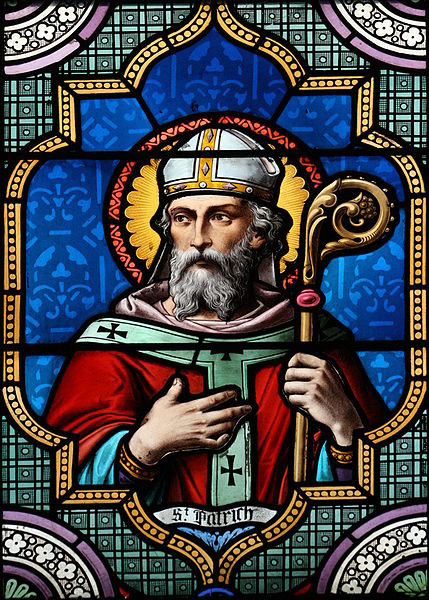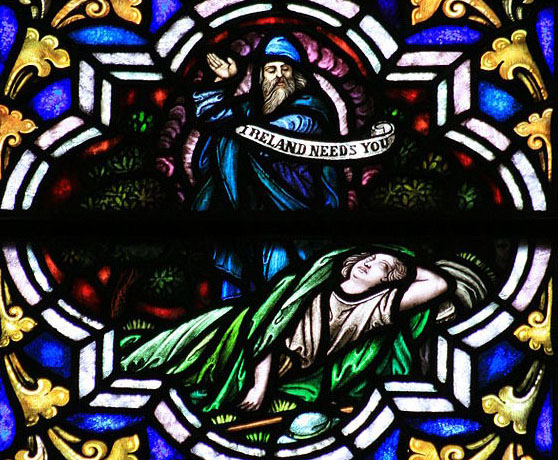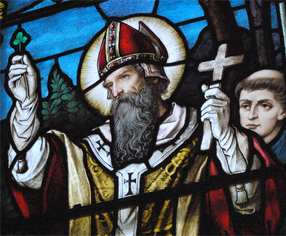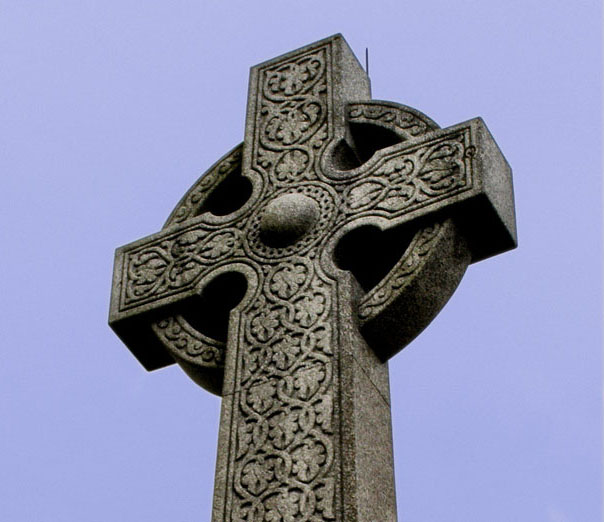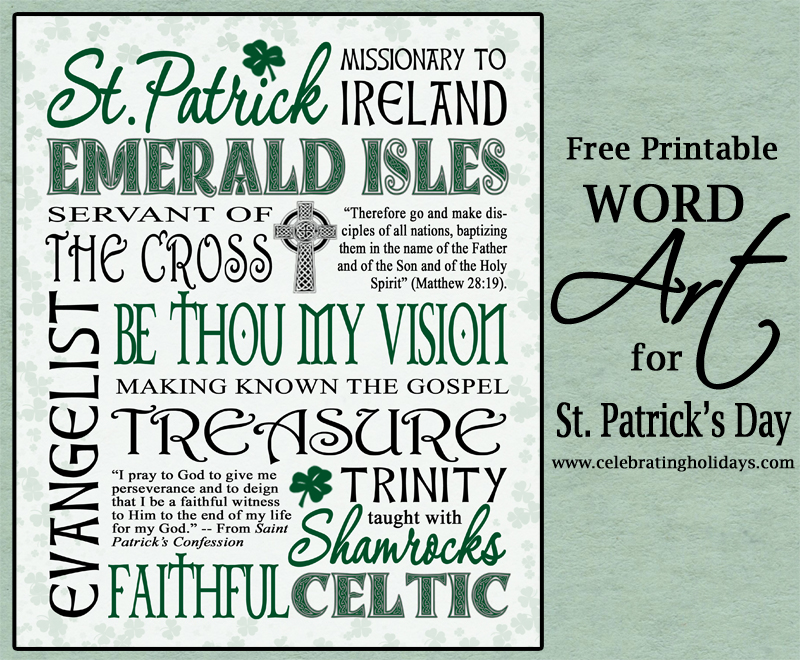St. Patrick’s Day History
For some, it comes as a surprise to learn that St. Patrick was an actual historical figure (and not a mythical leprechaun or the like). The story of the real St. Patrick is an intriguing one about a man who devoted his life to serving God and who changed the course of history for the country of Ireland and arguably, for all of Western civilization.
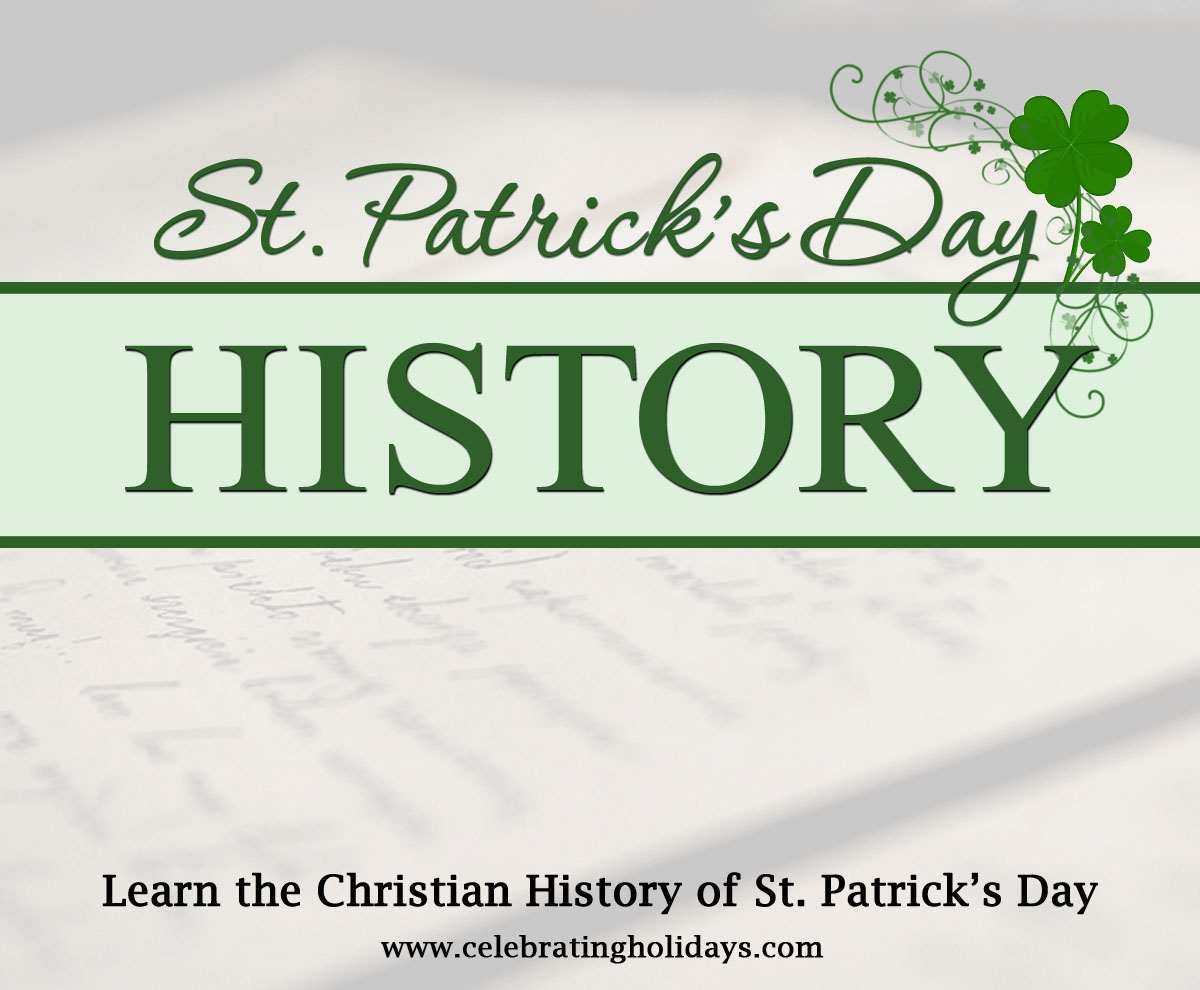
Who is St. Patrick?
Tradition holds that Patrick was born around 385 AD in a Roman province of Britain. Though Patrick’s parents were Christians, Patrick (according to his own testimony) gave little thought to religion in his youth. It took a dramatic event for God to get Patrick’s attention.
When Patrick was 16 years old, a group of Irish marauders raided his village, and he was carried off to be sold as a slave in Ireland. For six years, Patrick worked as a herdsman in Ireland, and it was during these years of solitude and slavery that he surrendered his life to God.
Patrick gives an account of his early life in his Confession:
“1. I am Patrick, a sinner, most unlearned, the least of all the faithful, and utterly despised by many. My father was Calpornius, a deacon, son of Potitus, a priest, of the village Bannavem Taburniæ; he had a country seat [a large estate] nearby, and there I was taken captive.
“I was then about sixteen years of age. I did not know the true God. I was taken into captivity to Ireland with many thousands of people — and deservedly so, because we turned away from God, and did not keep His commandments, and did not obey our priests, who used to remind us of our salvation. And the Lord brought over us the wrath of His anger and scattered us among many nations, even unto the utmost part of the earth, where now my littleness is placed among strangers.
“2. And there the Lord opened the sense of my unbelief that I might at last remember my sins and be converted with all my heart to the Lord my God, who had regard for my abjection [being cast off], and mercy on my youth and ignorance, and watched over me before I knew Him, and before I was able to distinguish between good and evil, and guarded me, and comforted me as would a father his son” (Confession, verses 1-2).
In his sixth year of captivity, Patrick heard a voice in his sleep telling him, “See your ship is ready” (Confession, verse 17). Patrick made his escape and traveled two-hundred miles to the coast of Ireland. He found a ship ready to sail, and he was allowed to board.
After traveling 3 days by ship and another 28 days by land, Patrick reached his home. Patrick recalled that his parents received him joyfully and begged him never to leave them again. However, Patrick had a vision soon after his return home. He saw a man approaching him with a letter from the people of Ireland, and he heard them crying, “We ask thee, boy, come and walk among us once more” (Confession, verse 23).
Patrick determined that he would dedicate himself to a life of religious work in Ireland. He would take his faith back to the people of the land in which he had found the true God. But first he had to prepare for this work. So, he made his way to the monastery of Saint Martin of Tours in France where he studied under the tutelage of St. Germanus (or Germain), the bishop of Auxerre. Early on, Patrick made known his desire to return to Ireland, but perhaps because he had missed many years of his education while in captivity, he was delayed. For eighteen years, Patrick studied and prepared for his work.
When the time finally came to select the first bishop to Ireland, St. Palladius was chosen over Patrick. It appears that Patrick was initially rejected as bishop because a friend, to whom Patrick had confided, revealed a sin from his youth. Patrick says of this unnamed sin that it was committed “one day in my youth, nay in one hour, for I was not yet strong. . . . I was then fifteen years old, and I did not believe in the living God” (Confession, verse 27). There has been much speculation about this sin. Some think it was participation in pagan worship, some believe it was sexual sin, and others imagine that it could have even been murder of a slave (something that was acceptable in the culture of the time). Whatever it was, Patrick chose not to reveal it in his Confession.
Fortunately, it was not long before Patrick had the opportunity to fulfill his call. It appears that Palladius abandoned his position as Bishop to Ireland after facing fierce opposition to Christianity. Soon thereafter, Patrick was commissioned by Pope Celestine I to take the place of Palladius in Ireland. Pope Celestine is said to have “crowned his pontificate by an act of the most far-reaching consequences for the spread of Christianity and civilization, when he entrusted St. Patrick with the mission of gathering the Irish race into the one fold of Christ” (Catholic Encyclopedia).
From the time of his arrival in Ireland, Patrick faced a great deal of resistance, largely from the pagan Druids. Patrick writes, “The merciful God often freed me from slavery and from twelve dangers in which my life was at stake — not to mention numerous plots” (Confession, verse 35). Patrick mentions that the Lord showed him “signs and wonders” (Confession, verse 45). Stories abound about the miracles done through Patrick, as well as Patrick’s fantastic display of God’s power against the Druids and their dark arts.
After returning to Ireland, Patrick spent 30 years, the remainder of his life, there. He was arguably one of the most successful missionaries in history. Thousands of Irishmen were converted as they heard Patrick speak the Gospel in their own sweet tongue and as they witnessed his intimate understanding of their culture — having learned both the language and the culture as a slave. One popular tradition tells that Patrick used the local shamrock (or clover) to illustrate the teaching of the Trinity — the three leaves of the shamrock are each unique, but they share the same essence.
It is interesting that Patrick also learned the art of shepherding as a slave. Secundinus, a fellow missionary, wrote of Patrick in a hymn:
“A good and faithful shepherd of the flock won for the Gospel,
God has chosen him to watch over God’s people
And to feed with divine teaching His folk,
For whom, following Christ’s example, he gives his life.”
(“Hymn on St. Patrick,” St. Secundinus, verse 55)
Patrick’s love of the Irish people was most certainly sincere. In a passionate “Letter to the Soldiers of Coroticus,” Patrick expresses his contempt for Coroticus, a Roman military leader who led his soldiers to brutally slaughter and enslave Irish believers. Patrick wrote, “Hence the Church mourns and laments her sons and daughters whom the sword has not yet slain, but who were removed and carried off to faraway lands, where sin abounds openly, grossly, impudently” (“Letter to the Soldiers of Coroticus,” verse 15). Interestingly, Patrick showed a special tenderness and concern for women, virtually absent from the writings of other men of his era. Patrick also revealed that he considered himself Irish, “Perhaps they do not believe that we have received one and the same baptism, or have one and the same God as Father. For them it is a disgrace that we [italics mine] are Irish” (“Letter to the Soldiers of Coroticus,” verse 16).
And lest we think it was a matter of small consequence that Patrick left his home in Britain (after returning from a life of slavery that had stripped him of his youth) and dedicated his life to Ireland and her people, he makes several references to the difficult sacrifice of giving up “his country and his parents” (Confession, verse 36, 43, and “Letter,” verse 1). Yet, he writes, “I rejoice within myself. I have not laboured for nothing, and my journeying abroad has not been in vain” (Letter, verse 17).
Indeed Patrick’s efforts were not in vain! His ministry dramatically changed the course of Ireland and perhaps even the course of Western Civilization (as documented in Thomas Cahill’s How the Irish Saved Civilization). When the Roman Empire fell, literacy was virtually lost by all but the Irish monasteries founded by Patrick; these monasteries preserved Western thought through the early Dark Ages and ultimately reintroduced them to the later Medieval world.
Patrick’s spiritual influence on the Irish people manifested itself in tremendous social change, even during Patrick’s lifetime. The practices of slave trading and human sacrifice ceased and though war never came to a complete halt, it “became more confined and limited by what we might call the ‘rules of warfare'” (McSorley, Anita, “The Saint Patrick You Never Knew“).
Patrick founded churches and schools too numerous to count, which, in time, would turn pagan Ireland into the “Isle of Saints.” By the time Patrick died, on March 17, around 493 A.D., the entire country went into mourning.
How Did St. Patrick’s Day Begin?
The people of Ireland have celebrated Patrick, their patron saint, every year since his death. Patrick, whose name means “father,” was well named. Without question, Patrick was the spiritual father of Christian Ireland.
Though Patrick was never officially canonized, it comes as no surprise. For the first thousand years of Christianity, there were not any official canonizations (not until 993 AD when St Ulrich, bishop of Augsbury, Germany, was canonized). In the early church, local Christian leaders were the ones to affirm celebrations of “heroes of the faith” once they died. Likely, at the time of Patrick’s death, nearly every Christian in Ireland would attribute their faith to his efforts. Patrick was most certainly a hero to Ireland.
Over 1200 years later, the celebration of Patrick was carried far across the Atlantic Ocean. In 1737, the first St. Patrick’s Day celebration in the United States was held in Boston among its many Irish immigrants. Interestingly, by 1776, during the siege of Boston which ultimately forced the British to evacuate on March 17, General George Washington used “Boston” as the secret password of the day and “St. Patrick” as the appropriate response.
With time, the holiday was embraced throughout the United States. For Christians, St. Patrick’s Day is an opportunity to celebrate the moving story of a missionary who dedicated his life to the very people who had enslaved him. It is a time to recognize “how beautiful are the feet of those who bring good news!” (Romans 10:15).
See a short video about St. Patrick at History.com.
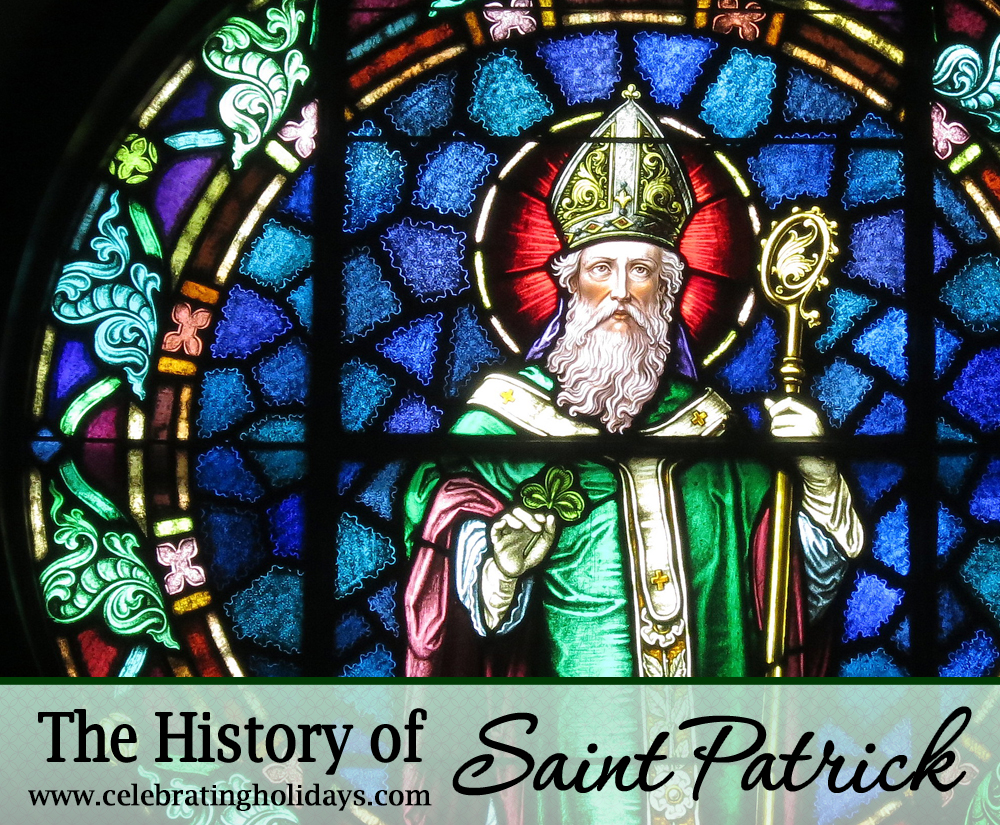
This page was created by:

We welcome your ideas! If you have suggestions on how to improve this page, please contact us.
You may freely use this content if you cite the source and/or link back to this page.
